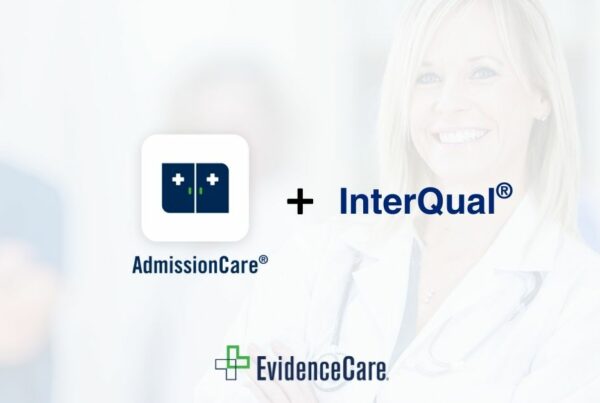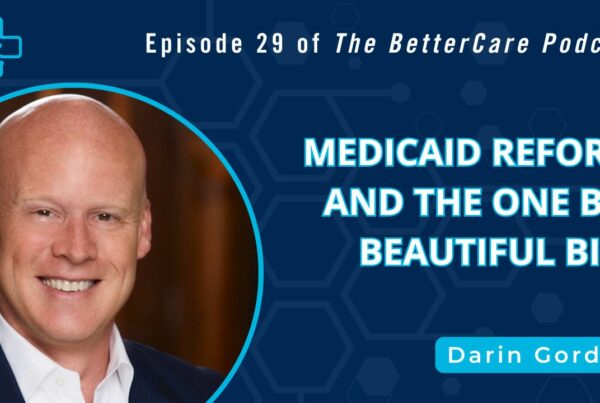Social Admission vs. Medical Necessity
In healthcare, the term “social admission” signifies instances where patients find themselves admitted to a hospital primarily for non-medical reasons. These can range from the need for custodial care to a desire to avoid personal challenges. However, these admissions come with their own set of difficulties, particularly in the realm of Medicare coverage and reimbursement.
For admitting clinicians, the key lies in distinguishing between genuine medical necessity and social admissions, ensuring meticulous documentation and rightful reimbursement.
Here are 6 key points to help clinicians better navigate the complexities of social admissions and medical necessity to ensure proper reimbursement for their hospital while providing appropriate care to patients.
1. Custodial Care and Medicare Coverage
Custodial care is care that helps you with activities of daily living (like bathing, dressing, using the bathroom, and eating) or personal needs that could be done safely and reasonably without professional skills or training. A fundamental aspect to comprehend is that Medicare typically does not extend its coverage to custodial care as these services fall outside the realm of medical necessity and often remain beyond the purview of Medicare coverage.
This underscores the importance of recognizing the limitations of Medicare coverage and the need for alternative reimbursement strategies to address the costs associated with custodial care. Hospitals should develop a plan for care beyond their walls, but few invest in skilled nursing facilities.
2. Documenting Medical Necessity for Social Admissions
Medicare defines “Medical Necessity” as healthcare services or supplies required for the diagnosis or treatment of an illness, injury, condition, disease, or its symptoms, meeting accepted medical standards. Similarly, states may have unique definitions of medical necessity for Medicaid services in compliance with their specific laws or regulations.
A crucial challenge arises when what may initially appear as a social admission could genuinely be medically necessary, yet the documentation lacks precision. This population of patients are usually frail and have multiple comorbid conditions. The patient may present with “weakness” or “fall” as well as social reasons that can be difficult to navigate.
ED clinicians need to keep in mind the risk of adverse events and potential for readmissions. Clinicians bear the responsibility of ensuring meticulous and accurate records that clearly outline the medical condition warranting hospitalization. This detailed documentation is crucial for justifying Medicare coverage.
To enhance the precision of medical necessity documentation, evidence-based guidelines such as the MCG or Interqual Guidelines can be invaluable tools for physicians in ensuring comprehensive and well-supported documentation practices.
Software such as AdmissionCare, makes these guidelines even simpler to access and document correctly by integrating them into the physician’s EHR workflow.
3. Reimbursement Strategies for Social Admissions
Hospitals frequently encounter challenges associated with social admission cases that may not align with Medicare coverage guidelines. In response to this, healthcare providers have various strategies to address potential coverage gaps, which are often not well-received by patients.
Two notable options are the Advance Beneficiary Notice of Non-coverage (ABN) and the Hospital-Issued Notice of Non-Coverage (HINN). These notices play a crucial role in transparently communicating to patients the possibility that they may need to assume the financial responsibility of the care provided if Medicare does not extend coverage to specific services.
If a service is not covered, Medicare may deny the associated claim. The absence of an ABN could pose challenges for providers seeking to bill patients directly for non-covered services, potentially resulting in financial loss for the hospital. Patients would need to check with the hospital to determine if they would be eligible for charity care.
4. Observation vs Outpatient in a Bed
After the end of medically necessary services (i.e. post procedure), the hospital’s utilization review team can provide patients with an ABN for observation or place them in outpatient care where there is no associated room and board charge. The decision between observation and outpatient care involves weighing the need for continued monitoring and evaluation against the patient’s overall stability.
Patients who are placed into the hospital based on clinician recommendation – whether post procedure, post clinic, or ED visit – are reviewed by the hospital’s utilization review team who can provide patients with an ABN for observation charges or place them in the hospital and not charge for observation.
This is frequently known as “outpatient in a bed (OPIB),” and there is no associated room and board charge. The decision between placing in observation or outpatient in a bed involves weighing the need for continued monitoring and evaluation against the patient’s overall stability and documenting to support the charges.
Both options aim to provide appropriate care while allowing patients to take financial responsibility, if insurance will not cover and documentation cannot support observation services. The only difference is that the hospital charges observation hours (room and board) for observation and not for outpatient in a bed.
5. Screening for Medical Necessity
Screening for medical necessity is a vital aspect of identifying social admissions, and the deployment of Utilization Review (UR), Case Management (CM), and social workers in emergency rooms proves highly beneficial. These professionals collaborate to assess incoming patients comprehensively, ensuring that social admissions are identified, and healthcare resources are allocated judiciously.
Utilization Review experts evaluate the appropriateness of services, Case Management professionals coordinate patient care, and social workers consider both medical and social determinants of health. This proactive approach facilitates the identification of individuals genuinely in need of post-acute care needs.
Here is an example of a Social Admission vs Medical Necessity:
-
- Example A (Social Admission): A 94-year-old woman with dementia requires care, but it’s not medically necessary. While sending her home may not be feasible, Medicare won’t cover custodial care. This scenario highlights the obligation that hospitals, especially non-profits, have to the community.
- Example B (Medical Necessity): A patient who fell and suffered a clavicle fracture initially seemed like a social admission. However, further tests revealed the potential for syncope. Clear documentation and a strong medical rationale resulted in an appropriate inpatient admission.
6. Ethical Considerations of Social Admissions
Balancing ethical obligations with financial constraints is a challenging aspect of healthcare, especially in social admissions. Physicians must navigate this delicate balance, addressing each case individually and not assuming immediate payment for every service provided.
In situations where patients may lack sufficient insurance coverage or face economic challenges, healthcare professionals need to consider the ethical imperative of patient well-being while recognizing the financial realities. This approach calls for open communication and collaborative decision-making to ensure the delivery of quality care while acknowledging and addressing the financial complexities within the healthcare system.
Hospitals need to incorporate social admit issues into their community health needs assessment. The IRS added regulations to Internal Revenue Code that require charitable hospitals at least once every 3 years to conduct a community health needs assessment (CHNA) and adopt an implementation strategy that includes a description of how the hospital plans to meet identified needs and incorporates input from community representatives. CMS will be auditing to ensure hospitals are addressing community needs.
In summary, the meticulous evaluation of cases is paramount for physicians to distinguish between social admissions and medically necessary ones. Through accurate documentation, appropriate reimbursement strategies, and an unwavering commitment to patient well-being, navigating the complexities of Medicare coverage in social admission scenarios becomes a more manageable task.
Get the latest research and insights on medical necessity denials, compliant documentation, and best practices from leading health systems. Download our new research report “Cracking the Code: A Data-Driven Guide to More Revenue and Less Denials”.










